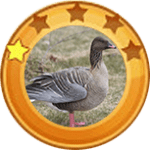- Home
- Shop
- Forest Series
- Grassland Series
- Desert Series
- Contact
- Home
- Shop
- Forest Series
- Grassland Series
- Desert Series
- Contact

Anser Series





Fabulous Gift for Your Kid
This 3-wheel scaled-down motorcycle features a fancy style of realistic appearance and can make your little one’s hand-eye coordination, confidence and courage be enormously improved during simulated racing riding experience.
Better Safety & Control
By controlling the switch pedal on the right footrest, this toy motorcycle can go forward and backward while turning left and right. The wheels can be quickly and smoothly stopped without any delay due to the brakes controlled by advanced electronic braking system.
Sturdy Bodywork
Due to the premium plastic material, the body of this ride-on motorcycle is uneasy to break even under the impact of high speed. So your kid can spare no effort in riding it.


CHARACTERISTICS
The Chipmunk is a member of the family Mammalia, Rodentia and Sciuridae. It is also known as the Striped Squirrel, the Timber Tiger and the Mini-bear. The body length among most Chipmunks ranges from 5.5 to 6.3 inches and the tail length is 5 Inches. Chipmunks typically weigh about 0.02 pounds and live about 5 to 10 years. They have small but prominent ears which face forwards, and small eyes on the sides of their heads. Most wild Chipmunks are lively.


Lorem ipsum dolor sit amet, consectetur adipiscing elit. Ut elit tellus, luctus nec ullamcorper mattis, pulvinar dapibus leo.


CHARACTERISTICS

RANGE AND HABITAT

DIET

BEHAVIOR
Habits and Lifestyle
Pink-Footed Geese are gregarious birds. They feed, nest and molt in large colonies. They are active during the day, spending most of the time foraging and at night birds roost in water. Before migration, Pink-Footed Geese undergo a flightless molting period that lasts around a month; during this time, birds remain close to open water. After molting, they migrate to the wintering grounds. Southbound migration takes place from mid-September to early October, and northbound migration occurs from mid-April to early May. Pink-Footed Geese are highly vocal birds; they produce a medley of high-pitched honking calls, being particularly vocal in flight.Mating Habits
Pink-Footed Geese are monogamous breeders and pairs mate for life. They breed in loose colonies or in pairs. These birds often nest on cliffs close to glaciers to provide protection from predators (mainly Arctic fox) and also on islets in lakes. Nests are scrapes on the ground lined with plants and down. Females lay up to six eggs in early to mid-May in Iceland or late May in Svalbard. The incubation lasts 26-27 days done by the female; during this time, the male stays nearby guarding her and the nest. The goslings hatch precocial and are able to accompany their parents on foot to the nearest lake soon after hatching. They fledge after about 56 days and become reproductively mature at 3 years of age.
The Chipmunk is a member of the family Mammalia, Rodentia and Sciuridae. It is also known as the Striped Squirrel, the Timber Tiger and the Mini-bear. The body length among most Chipmunks ranges from 5.5 to 6.3 inches and the tail length is 5 inches. Chipmunks typically weigh about 0.02 pounds and live about 5 to 10 years. They have small but prominent ears which face forwards, small eyes on the sides of their heads. Most wild Chipmunks are lively.
The Red Squirrel, a member of the Sciuridae, is an arboreal, omnivorous rodent often referred to as a Forest Seeder and folklore as the Devil King Squirrel.
The Arizona Gray Squirrel, also known as the American Gray Squirrel, is a member of the family Rodentia and Sciuridae. It is small in size, with gray fur and a belly between white and cream. It has long ears, no tufts of fur and a fluffy tail edged in white. The body is about 16-20 inches long and weighs up to 1.4 pounds.
The Rock Squirrel, also known as Sao Maozi or Stone Mouse, belongs to the rodent and is a species in the family Sciuridae. The most common natural predators of the Rock Squirrel include bobcats, owls, eagles and snakes. Though the Rock Squirrel is cute, alert, and courageous, it is still considered a pest due to its habit of destroying crops.
The Abert’s Squirrel is a member of the genus Sciurus with a body length of 18-22.8 inches, a tail length of 7.5-9.8 inches and a weight of 2.2 pounds, and can live up to 10 years in the wild. Its most distinctive feature is tassels of fur about 0.8-1.2 inches long at the tip of its ears, which looks very interesting. In addition, it is alert and agile.

Nearly 40,000 Pink-Footed Geese Flock to Montrose Basin on Winter Migration but How Are They Counted?
Numbers of pink-footed geese touching down in Angus on their winter migration have hit almost 40,000.
For the past month the amazing dawn and dusk spectacle of thousands of birds taking off and landing has had folk flocking to Montrose Basin.
The geese start arriving in mid-September from breeding grounds in Iceland and Greenland.
Numbers generally peak in mid-October.
And last weekend the goose count at the Scottish Wildlife Trust reserve was a huge 37,224.
Record total in 2016
The figure is some way shy of the reserve’s record tally of around 90,000 in 2016.
But Montrose Basin visitor centre assistant manager Joanna Peaker says the noisy V-shaped skeins have still proved a big draw with visitors.
“Our peak so far this year was 37,224 on Saturday,” said Joanna.
“Our volunteer goose counting team will be out again this Sunday for the Icelandic goose census.
Thousands of pink-footed geese taking off and landing at Montrose is a noisy spectacle.
“We have put on a number of events around the annual goose migration and they have all done really well.”
And this weekend is the last chance for visitors to enjoy late opening of the reserve visitor centre until 7pm.
There is also a Wild Geese and Other Tales event with local storyteller Cara Roberts on October 23.
In the next few weeks, many of the ‘pinkies’ will head further south to spend the winter months on the coastal flats of places such as Norfolk.
But up to 10,000 could stick around in Angus, wintering here before flying back north in early spring.
How do you tot up a flock of 30,000-plus?
“There are a couple different types of ‘goose count’ we do at Montrose Basin,” says Joanne.
“One is an estimate done by the ranger at dawn just before the geese take off for the day.
“Over the years he’s become very experienced in counting the geese and is able to look at a group and estimate the number based on the size.
Just one of the 35,000-plus pinkies which have visited Montrose this autumn.
“So he knows what a thousand geese looks like and he can multiply it up from there.
“The other way we do it is for our volunteer goose counters to go out and station themselves at their own part of the basin before sunrise and count them as they take off.
“They are counted as they fly over the counter’s zone – so it means they aren’t double counted.
“All the zones are then added up to give us the total and the accurate number such as this year’s 37,224 on Saturday.”



Follow Us: